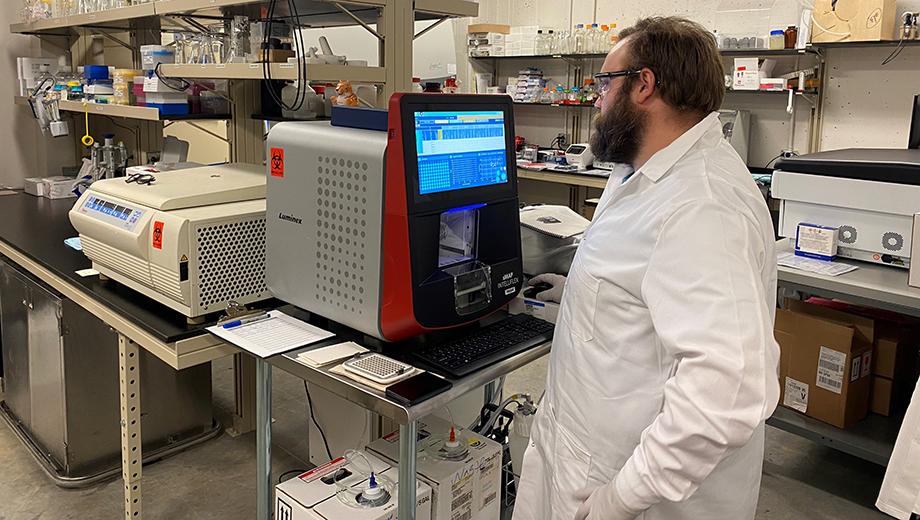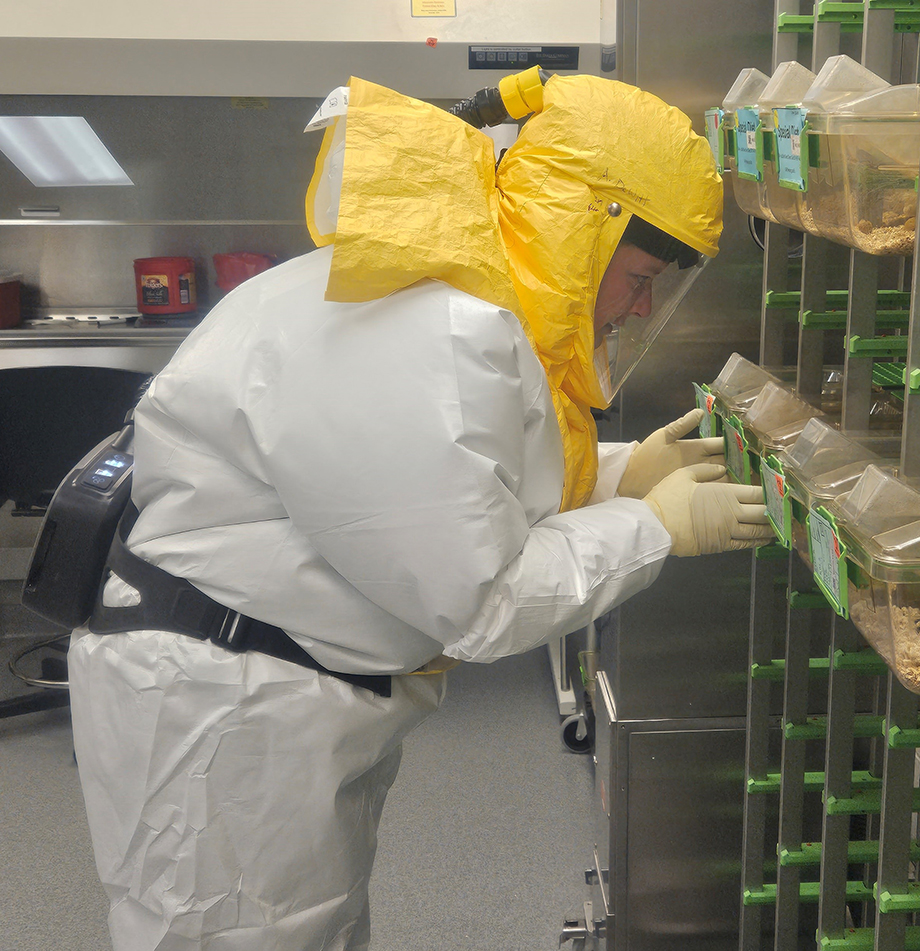Published on
Published 11/3/2023
The Animal Infection and Monitoring Services core supports studies on a wide variety of bacterial and viral diseases.

Three highly trained scientists in the University of Missouri Animal Infection and Monitoring Services (AIMS) core support research using Biosafety Level (BSL) 1, 2 or 3 agents in a variety of animal models and routes of infection.
“TheAIMS core at the Laboratory for Infectious Disease Research (LIDR) evolved and grew during the COVID-19 pandemic out of necessity to support the influx of investigators expanding into SARS-CoV-2 research,” said Rachel Olson, LIDR’s chief scientific officer. “AIMS now supports studies on a wide variety of bacterial and viral infectious diseases.”
AIMS offers one-on-one consultations, animal model development and refinement services, study support, sample processing and analysis and assistance for grant and manuscript preparation. Below, Olson shares more information about this important resource.
Please describe the core’s role on campus.
AIMS provides investigators with access to high-containment experimentation, supporting the sample-generation phase of their research.
The biocontainment research support services provided by AIMS are unlike any available locally. LIDR is one of a handful of National and Regional Biocontainment Laboratories supported by the National Institutes of Health. Each of the facilities is unique, but they all aim to provide excellent research support in the biocontainment space as part of the national emergency response network.

What are your research capabilities?
Our staff can support in vivo experiments from researchers across campus. We have primarily been involved with studies of respiratory pathogens, but also support diseases of other organ systems. We work closely with LIDR’s other cores, including the Immunology Core, to broaden the support available to investigators. In addition, expanding our repertoire of infectious agents and advanced instrumentation has opened new research areas and facilitated collaborations on and off campus.
We have more equipment available for use than you’d think. And most of it isn’t in containment. For example, we have a CTL Immunospot and a MESO Quickplex reader. We also support access to Mutant Mouse Resource and Research Center instrumentation housed at the LIDR: a Nikon Ti2E inverted microscope, Vet Axcel blood chemistry analyzer and Luminex Intelliflex. We’re excited about recently onboarding a LagoX, which has bioluminescence, fluorescence and X-ray imaging capabilities for in vivo experiments.
See more details about our instruments, which allow us to support downstream analysis of samples generated on and off campus.
Which research disciplines can benefit most from your services?
While infectious disease and immunology researchers are most likely to use our services, AIMS is available for necropsy support for any in vivo experiment. We also perform assays on any of our instruments. For example, we’ve helped a number of researchers design and run multiplex cytokine panels on the xMap Intelliflex instrument to detect disease-specific biomarkers.
How are researchers using the core?
- We’ve worked with investigators who have moved into the BSL-3 research space since the COVID-19 pandemic. For some of these researchers, we have facilitated the training and use of LIDR facilities by their team, while others prefer to make use of our services and maintain their personnel’s focus on other parts of the research puzzle.
- All of our staff have obtained clearance to work with select agents, so we’re able to offer support to current LIDR users. For instance, we’ve worked with Deborah Anderson, professor of microbiology and immunology, to support her plague studies. This also means we’ve been able to work with commercial entities to support early-phase pre-clinical studies.
- While we’re most often requested for high-containment services, we are not limited to only assisting investigators at the LIDR. Wendy Picking, professor of veterinary pathobiology and a Bond Life Sciences Center investigator, has worked with us to refine a rabbit model of Pseudomonas aeruginosa for vaccine efficacy studies.
- The capabilities of the LIDR are specialized, and most institutions do not have the capacity to work in containment at a high throughput the way Mizzou does. That has provided us with opportunities to test newly generated animal models, verify specific research questions and evaluate potential therapeutics and vaccines for external academic and industry investigators.
Anything else we should know?
We are expanding our services and instrumentation as often as possible. Please let us know what services you’d like to see in the future.
How should researchers request services?
- To request time on specific equipment, email Chris Johanning.
- To schedule in vivo experiments, email Alex DeWitt.
- For study design consultation, grant support and questions regarding capacity or specific capabilities, email Rachel Olson.
Investigators will be asked to complete our AIMS Project Intake Form before the initiation of any studies.